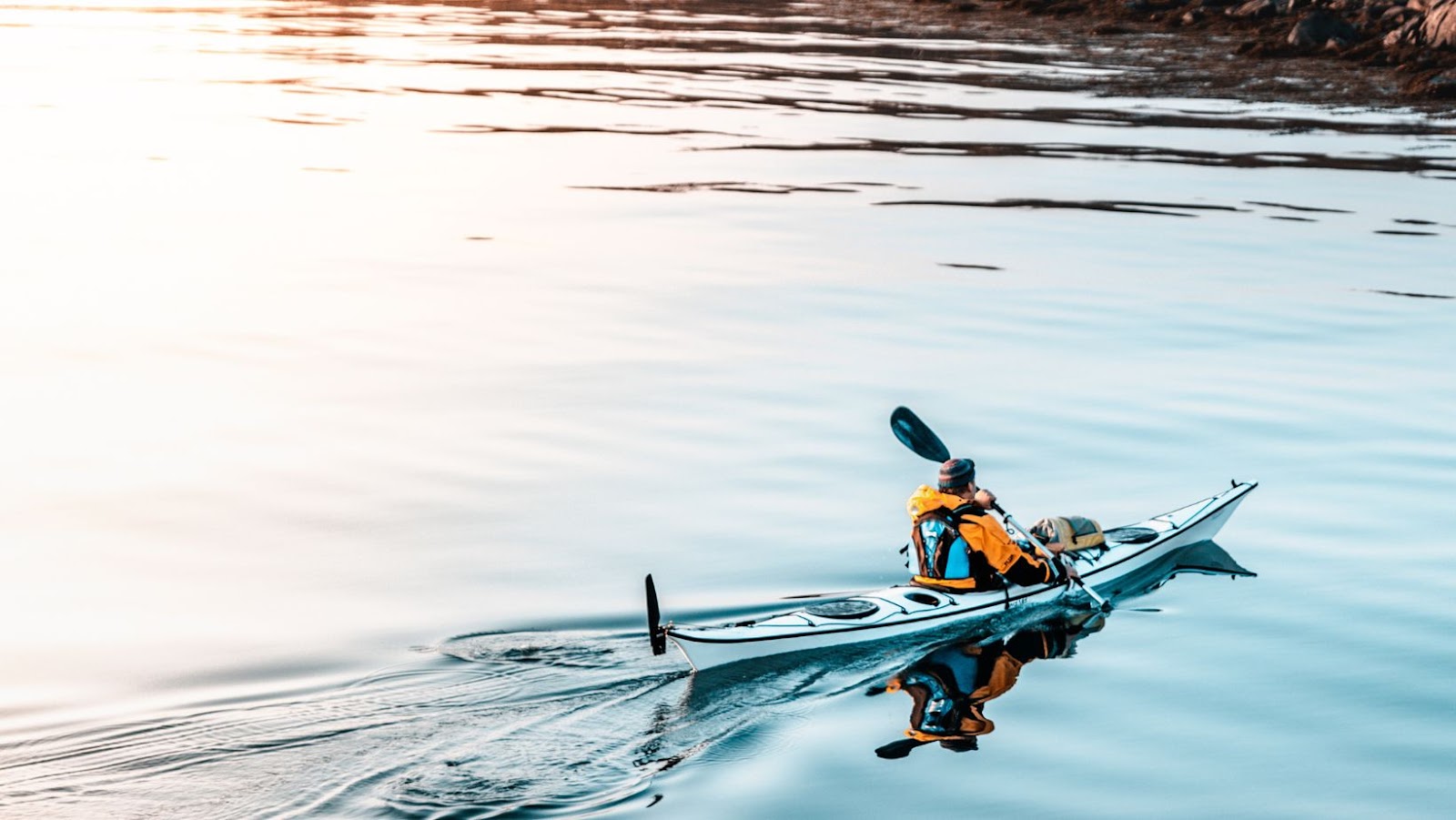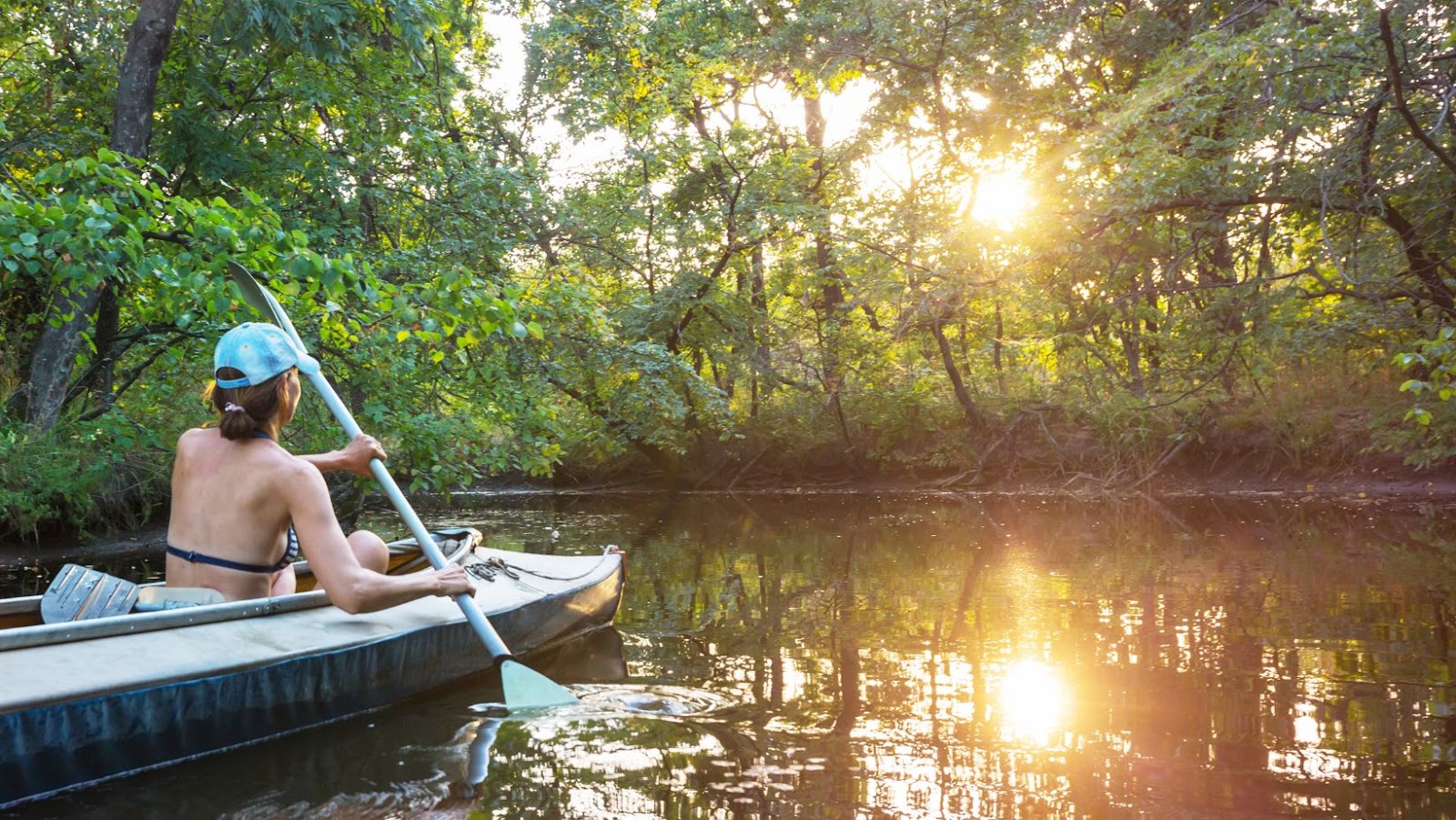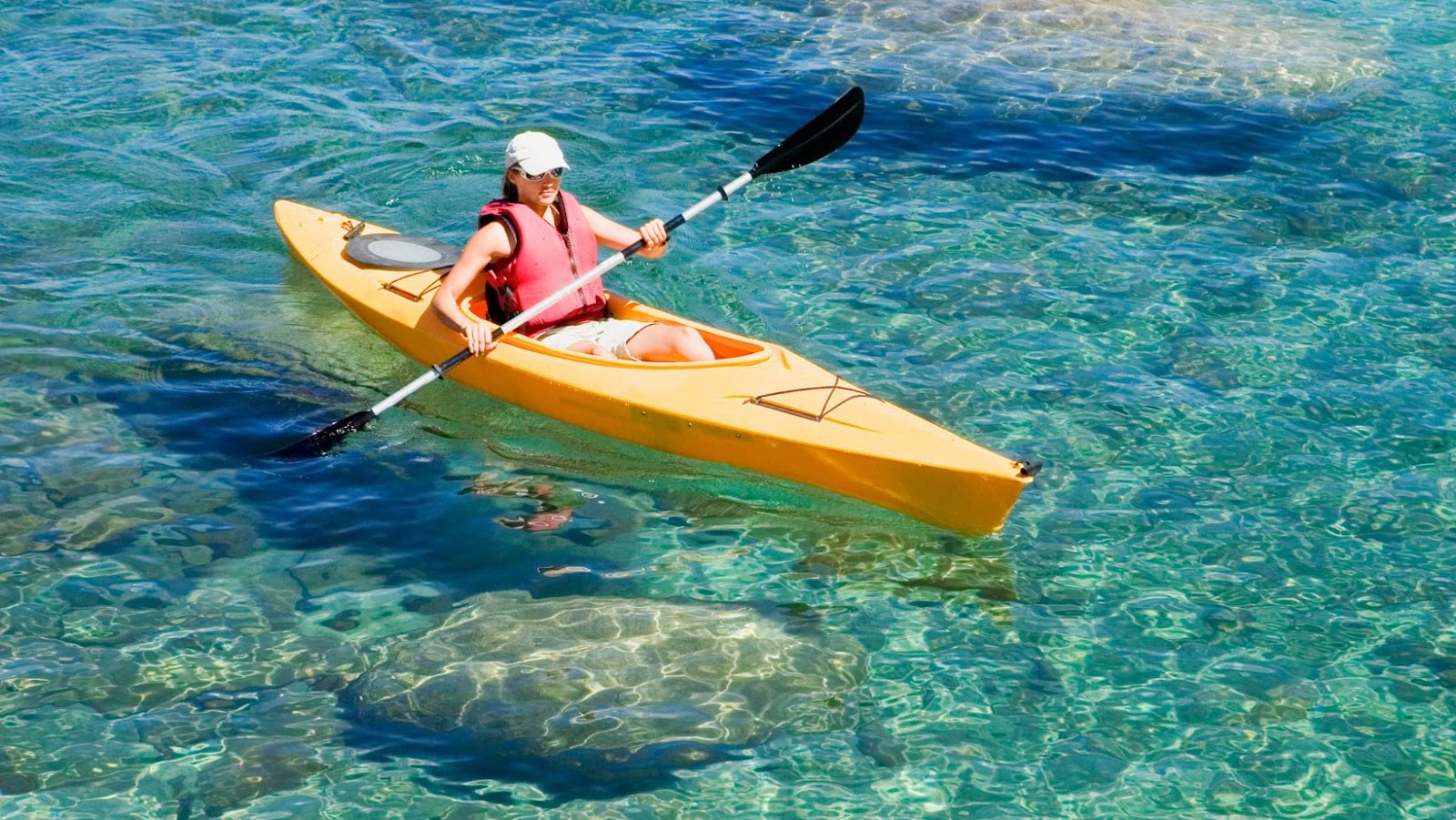
Are you looking to add a fun, adventurous activity to your life? Kayaking may be just the thing for you! But is it easy? You’ll find out in this blog post as we explore the basics of kayaking so that you can make an informed decision.
Whether you’re a beginner or an expert, this article will help you learn all about navigating the waters with ease.
Kayaking is a great way to get outdoors and enjoy nature while getting some exercise. Whether you’re looking to paddle down slow-moving rivers or navigate white-water rapids, kayaking can be a fun and exciting activity.
Before you dive in, however, it’s important to understand the basics of kayaking, basic safety precautions, and essential equipment you’ll need for your adventure. With the right preparation, anyone can learn how to kayak!
What is Kayaking?
Kayaking is a form of paddling in which you sit on a kayak, a small boat propelled by a double-bladed paddle. It is an incredibly varied sport that can be done in many types of water, ranging from lakes and rivers to the open ocean, and it offers you the chance to explore both tranquil and wild environments.
When you’re first learning how to kayak, it can seem like a daunting task – maneuvering your way through choppy waters with an unfamiliar vessel. However, with the right instruction and practice, it doesn’t take long to become confident on the water.
Basic kayaking skills include paddling efficiently, controlling your direction with edging strokes, braces (which are used to steady yourself when waves or currents push against your boat) and understanding how different kinds of wind may affect your movements on the water. Beyond these skills there are many more that experienced kayakers learn depending on their style of paddling – whitewater kayakers will have very different needs than those who prefer sea kayaking!
Kayaking can be as easy or difficult as you make it – by taking lessons from certified instructors during your first few attempts out on the water you can stick to manageable routes that closely match with your skill level so that you can achieve some success quickly. You’ll then know that success for yourself and see just how fun paddling really is!
Is Kayaking Easy
Kayaking is a great water activity for people of all ages and fitness levels. It is an enjoyable way to explore lakes, rivers, oceans, and more. Even though kayaking may seem daunting due to its popularity as an extreme sport, it’s actually a very easy activity for beginners. Start paddling with some basic kayaking tips and you’ll get the hang of it in no time!
The main benefits of kayaking include being able to explore the outdoors while being closer to nature, having a low-impact form of exercise to reduce stress, building core strength over time, and building confidence around boats on the water. Kayakers can benefit from improved strength and agility by doing several types of paddling drills while out on the water. With practice and proper instruction, kayakers can also learn how to master their craft by taking their skills up a notch in faster waters or in more difficult conditions such as whitewater rapids or into surf breaks (longshoreman).
Kayaking is a great way for those who are still learning how to use boats on the water in a controlled environment. Not only is it good for your health physically but mentally as well—it does wonders for self-confidence! Kayaking can give you wonderful experiences that you might not otherwise experience from other forms of sports or recreation on land so get outside and explore away today!
Types of Kayaks
Kayaks come in a variety of styles and sizes, each designed for different use. The most common type of kayak is the sit-inside style, which has an enclosed cockpit and is great for recreational paddling and short day trips. Sit-inside kayaks can be further classified into two main categories: touring and whitewater. Touring kayaks are designed for speed and distance on flat water like ponds, lakes, or slow rivers; they tend to be longer than whitewater models. Whitewater kayaks are shorter than touring types but feature a more pronounced keel line that allows them to maneuver easily in rapids or turbulent water.
In addition to the sit-inside type, another popular style is the sit-on-top which has an open cockpit on top of the hull which allows the paddler easier access in and out of the boat as well as a better field of vision when spotting obstacles ahead. They offer greater stability over conservations models and can track straight while heading downriver with little effort from the paddler – making them ideal for beginner level paddling trips such as lake tours or whale watching expeditions where speed isn’t necessarily required.

Kayaking can prove challenging depending on your skill level; however with practice you will become more confident when braking waves, following routes and negotiating turns with increased control over your vessel – regardless of your chosen style of craft!
Equipment Needed
For kayaking, the most important piece of equipment is the kayak. There are many different types to choose from—sit-on-tops, inflatable, recreational, touring, sea and whitewater. Sit-on-top kayaks are good for beginner paddlers since they are more stable than traditional touring kayaks which sit lower in the water. Before purchasing a kayak, it’s wise to test different models and check the weight capacity versus your own weight so you select one that’s best for you and your situation.
Kayaking also requires additional safety gear including a well fitting life jacket (personal flotation device), whistle or other signaling device, helmet for rough waters and adjustable paddle for easier maneuvering on rougher waters. Paddling gloves will help protect your hands from blisters and keep them warm in cooler weather. Be sure to wear sun protection too! For longer trips away from land you may want to bring along a dry bag with essentials such as a first aid kit, sunscreen and extra clothing—just in case!
Kayaking Techniques
Kayaking is popular sports activity enjoyed by many people around the world. It can be a great way to exercise, explore and enjoy nature, or just have fun with friends. In order to have an enjoyable kayaking experience, it is important to understand and use the proper kayaking techniques.
When starting out in kayaking, it is important to practice the most basic techniques such as paddling in straight lines, turning corners, and correcting for wind direction. Basic paddle strokes like the low brace stroke and high brace stroke allow you to control your boat in varying conditions like choppy water or strong winds. Paddle strokes are especially important since they help you maintain balance while moving through the water.
Practicing forward stroking techniques with efficient paddle strokes will improve your speed and control when tackling moments of turbulence. To add power to each stroke, practice carving both sides of the kayak when starting out. This helps propel your boat forward by using more of your body’s strength than single-blade forward strokes would. To help you maintain form while paddling long distances, use precise timing between each alternating paddle stroke movement of power and recovery between arm movements will help you move quickly over vast distances at a consistent speed easily
Kayakers must also learn how to stay safe on the water which includes knowing applicable laws for recreational boating in their vicinity as well as reading weather forecasts before heading out on a trip. Being familiar with self-rescue techniques like flipping a capsized boat back upright or dressing accordingly for keeping warm are essential skills for any person participating in water recreation activities like kayaking. Kayakers can also work on improving their technique by taking courses offered by certified instructors that specialize in teaching beginner or advance level courses regarding different styles of kayaking technique education.
Safety Tips
Before embarking on a kayaking excursion, it is important to take safety precautions to ensure a safe and enjoyable experience. Here are some safety tips for kayaking:
– Wear a Personal Floatation Device (PFD): It is important to wear an appropriate fitting PFD at all times. This ensures that you remain above water in the event of capsizing or other accidents, even if you are an experienced swimmer.

– Learn the Basics of Kayaking: If you are new to kayaking, it is helpful to learn the basics of the sport before heading out. This helps give you confidence and could save your life if something goes wrong out on the water. Bring along an experienced partner and take advantage of instruction courses so that you know what to do in any situation.
– Check for Weather Conditions: Before going out on your kayak, check for weather conditions so you can plan accordingly. Be aware of sudden changes in weather that may cause waves or strong currents, which can be dangerous for novice or inexperienced paddlers.
– Be Aware of Your Surroundings: When paddling close to shorelines, be conscious of your surroundings, including changes in the landscape like sandbars and other obstacles that could cause obstructions or capsizing risks. Visible markers such as wild life refuges and land elevations should be taken into consideration as well so that paddlers know when they’ve gone beyond their limits without endangering themselves or others who may be nearby.
In conclusion, kayaking is definitely a fun and low-impact way to enjoy the outdoors. It is an activity that can be enjoyed by people of all ages and experience levels, so long as they are willing to take the necessary safety precautions. Beginners should try a calm body of water while more experienced kayakers may want to try something more challenging. Regardless of what level you’re at, being out on the water in a kayak is always an invigorating experience.




